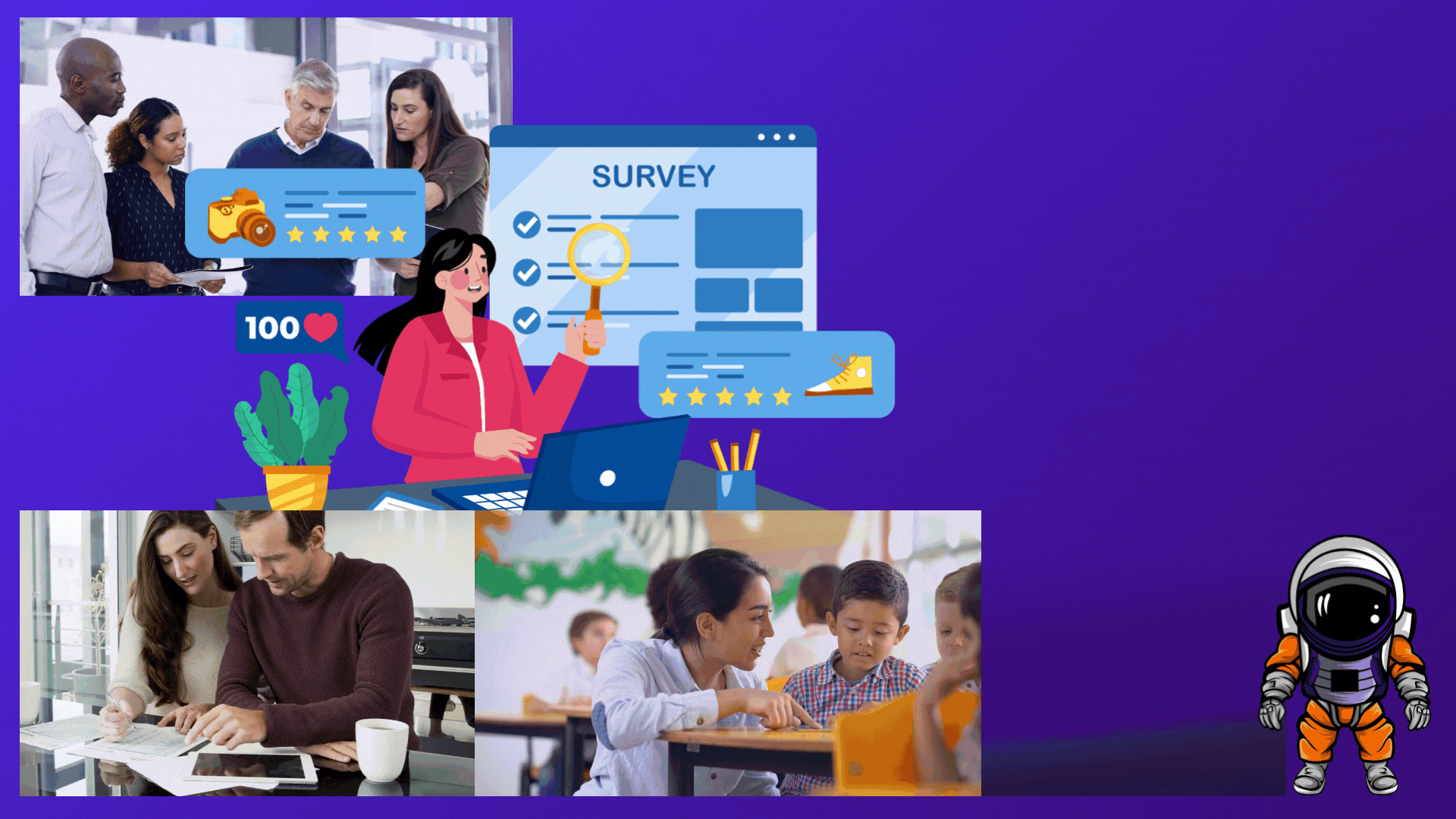Inspirational journeys
Follow the stories of academics and their research expeditions
Understanding the Different Learning Needs of Each Generation in the Current Era

Ignite the Learning Fire: Understanding the Different Learning Needs of Each Generation in the Current Era.
In a fast-paced world, technology plays an inseparable role in our daily lives. Learning is not just about memorizing textbooks, but also about adapting, developing ourselves, and keeping up with the constant changes that occur. Inspiring ourselves to learn is the key to unlocking the potential of people of all ages, especially when each age group or each generation has distinctly different learning needs and characteristics. This article will take you to explore the learning needs of each generation in the current era, along with interesting trends for the future.
In the digital age, where technology is rapidly changing the landscape of work, communication, and life, learning has become a more important skill than ever. Whether it is learning to develop new skills (Upskilling) or learning to adapt skills to meet the needs of the changing labor market (Reskilling), creating an environment and learning methods that are appropriate for each group of learners is very important. One important factor to consider is the differences between generations, or what is known as "Gen".
Each generation grows up in a different social, economic, and technological environment, which shapes their unique values, beliefs, and learning methods. Understanding these differences will help organizations, educators, and even individuals themselves design and select learning methods that meet their needs and motivate them more effectively.
We can divide the main generations in the current era as follows:
# Baby Boomers:
Learning Needs: Focus on staying relevant in the workforce, acquiring new skills for retirement or second careers, understanding new technologies, and personal enrichment. They value learning that is practical and connects to their experience.
Learning Styles: Prefer structured learning environments, face-to-face interaction, clear instructions, and opportunities for discussion and reflection. They appreciate learning from experienced instructors and value credentials.
Baby Boomers (born approximately 1946 - 1964): This group grew up in the post-World War II era, valuing stability, loyalty to organizations, and hard work. They are often accustomed to traditional learning methods such as classroom training, reading documents, or learning from experienced individuals.
* Learning Needs: Require clarity in content, a clear structure, value the credibility of the instructor, and often prefer formal learning with face-to-face interaction.
* Learning Trends: May need support in using new technologies for learning and prioritize the tangible benefits of learning for their work.
* Future Trends: Increased adoption of online learning platforms with user-friendly interfaces, blended learning approaches, peer-to-peer learning with other boomers, and learning focused on health, finances, and hobbies.
# Generation X:
Learning Needs: Focus on career advancement, skill development to adapt to changing industries, work-life balance, and personal growth. They seek learning that is efficient, relevant, and provides immediate value.
Generation X (born approximately 1965 - 1980): This group grew up during a period of gradual technological change. They are highly independent, prefer working autonomously, and value work-life balance. They are often open to various learning methods.
Learning Needs: Require flexibility in learning, the ability to learn at their own pace, a variety of options, and value the relevance of the content to their work.
Learning Trends: Prefer blended learning that combines online and offline learning, as well as learning through videos and articles.
# Millennials or Generation Y:
Learning Needs: Focus on career development, acquiring skills for a purpose-driven career, continuous learning to stay competitive, and personal fulfillment. They value collaborative learning, feedback, and learning that aligns with their values.
Learning Styles: Collaborative and social learners who enjoy group projects, online communities, and interactive learning experiences. They are comfortable with technology and prefer learning that is engaging and relevant to their goals.
Future Trends: Increased demand for personalized learning experiences, gamification in learning, learning through social media and online communities, and learning that focuses on leadership, innovation, and social impact.
# Millennials or Generation Y (born approximately 1981 - 1996): This group grew up with the internet and information technology. They are accustomed to rapid access to information, enjoy collaboration, and value the meaning and purpose of their work. They often look for learning that is fun and engaging.
Learning Needs: Require learning that is concise, easy to understand, highly interactive, emphasizes collaboration, and can be practically applied. They prefer learning through digital channels such as online videos, online courses, and social media.
Learning Trends: Enjoy gamification, microlearning, and collaborative learning.
# Generation Z:
Learning Needs: Focus on acquiring skills for future jobs, practical and hands-on learning, entrepreneurial skills, and learning that is engaging and entertaining. They value instant feedback, flexibility, and learning that is accessible on their mobile devices.
Learning Styles: Digital natives who prefer short, interactive learning content, video tutorials, online courses, and learning through social media platforms. They are quick learners and expect information to be readily available and easily digestible.
Future Trends: Dominance of mobile learning, augmented and virtual reality in learning, personalized learning powered by AI, learning through short-form video content (like TikTok), and emphasis on skills-based learning and digital literacy.
# Generation Z (born approximately 1997 - 2012): This group grew up in a world where technology is an integral part of daily life. They are digital natives with high technological fluency, prefer speed, and value individuality and diversity. They often look for learning that is modern and interesting.
Learning Needs: Require learning that is fast, immediate (just-in-time learning), has a variety of content formats, emphasizes visuals and videos, and is easily accessible through various devices. They prefer learning through popular online platforms such as YouTube, TikTok, and Instagram.
Learning Trends: Prefer learning through short-form video, learning from influencers, and personalized learning tailored to individual interests and needs.
# Generation Alpha:
Learning Needs: Focus on developing foundational skills for a rapidly changing world, creativity, critical thinking, problem-solving, and digital literacy. They will expect learning to be highly personalized, engaging, and integrated with technology from a very young age.
Learning Styles: Highly visual and interactive learners who will thrive in gamified learning environments, personalized digital learning platforms, and immersive experiences using AR/VR. They will likely learn through play and interactive simulations.
Future Trends: Fully personalized learning pathways powered by AI, widespread use of AR/VR and immersive technologies, gamification as a core learning mechanism, learning integrated with robotics and coding from early childhood, and a blurring of lines between formal and informal learning.
# Generation Alpha (born approximately 2013 onwards): This group is growing up in an era of highly advanced technology such as AI, VR, and AR. They will be familiar with these technologies from childhood and will have significantly different learning methods compared to previous generations.
Learning Needs (Predicted): Expected to require highly interactive learning, integrating new technologies such as VR/AR and AI, highly personalized, and emphasizing learning through games and experiences.
Interesting Future Trends:
In addition to understanding the needs of each generation, there are also interesting future trends in learning that will be impacted by all generations, such as:
Lifelong Learning: The need to continuously learn and develop oneself throughout one’s working life will become increasingly important.
Personalized Learning: Technology will allow for a greater customization of learning content and methods to suit individual needs and interests.
Microlearning: Learning content in short, concise, and to-the-point formats will become more popular as it meets the digital age’s need for information quickly.
Blended Learning: A combination of online and offline learning will continue to be a popular format as it can meet the diverse needs of learners.
Using New Technologies: Technologies such as AI, VR, AR, and the Metaverse will play an increasingly important role in learning, making learning experiences more immersive and engaging.
Conclusion:
Understanding the different needs of today’s generations is essential in designing effective learning experiences. Recognizing the unique characteristics and learning trends of each group will allow us to truly inspire and unlock the potential of learners of all ages, whether they are Baby Boomers who crave clarity and authenticity, Gen X who crave flexibility and independence, Millennials who seek fun and engagement, Gen Z who crave speed and innovation, or even the future Gen Alpha. Adapting and developing learning strategies to meet these diverse needs will be key to success in developing a workforce and creating a sustainable learning society.





Leave a comment